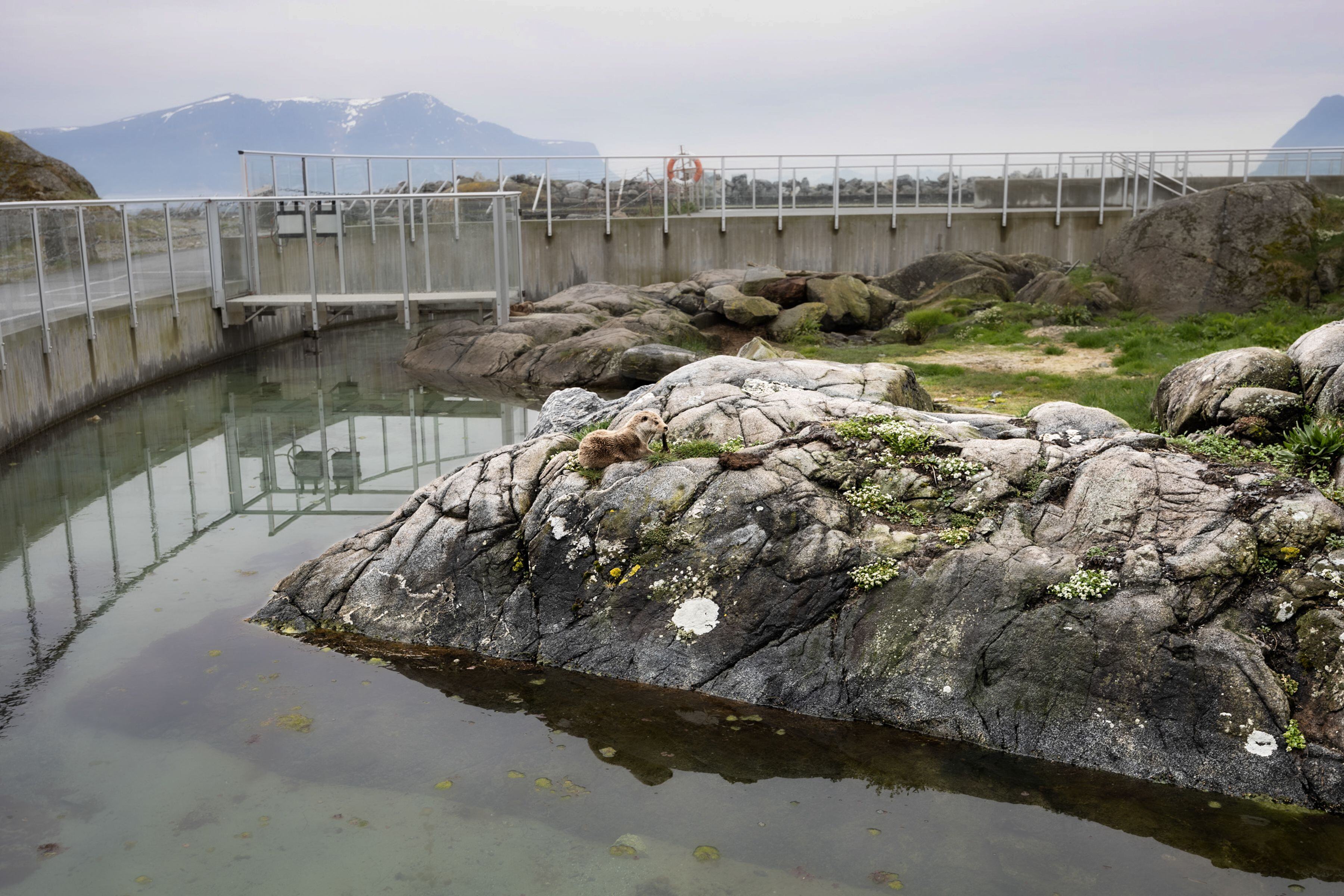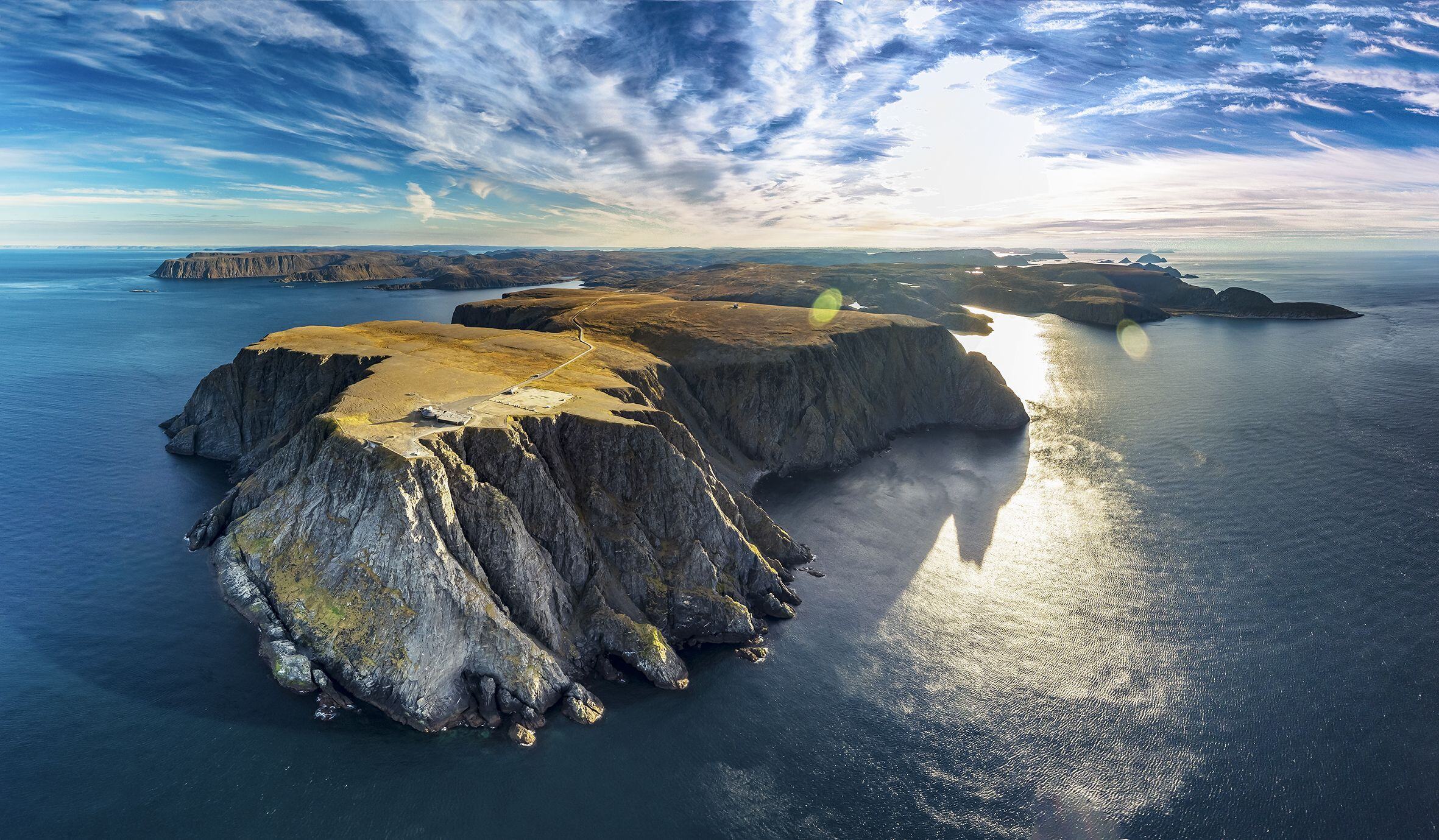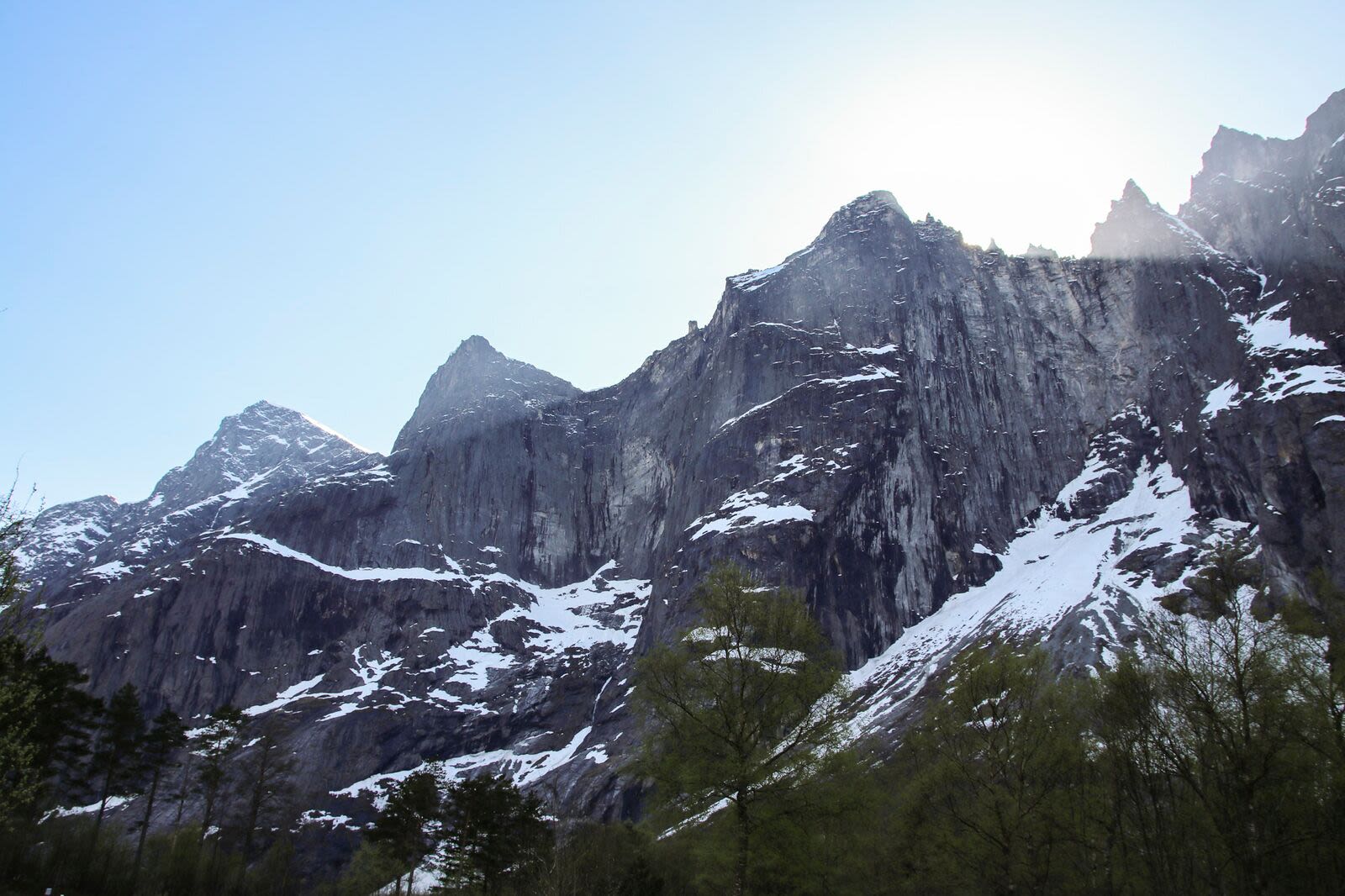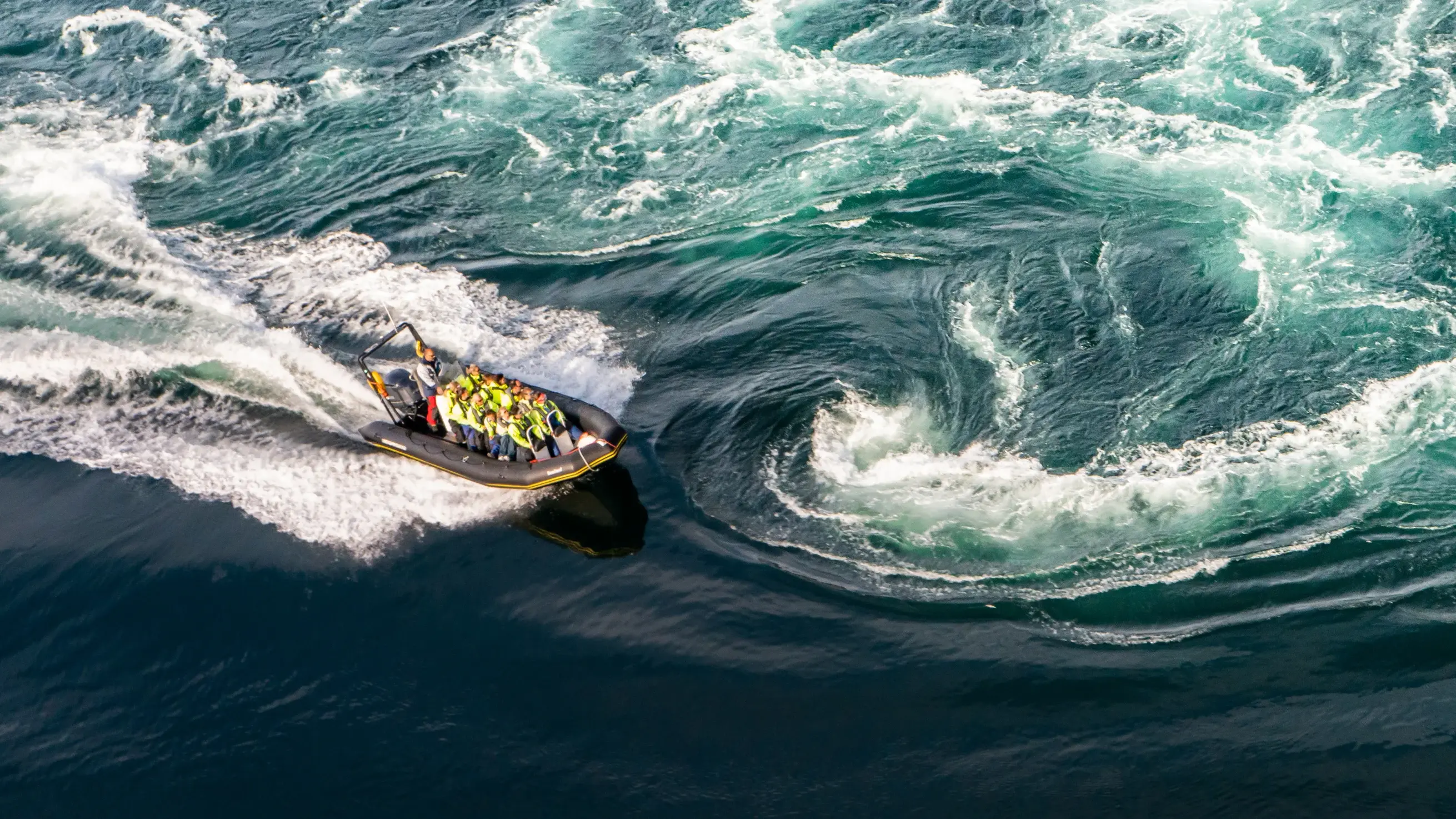This tank holds four million liters of seawater and is home to hundreds of large marine fish.
However, there's more to the
Atlanterhavsparken Aquarium
in Ålesund than just that.
It offers a glimpse into another world.
Dive into the Depths of the Norwegian Coast!
Located just a short bus ride from the ship’s terminal, the Atlanterhavsparken Aquarium is among Havila Voyages’ most popular Ålesund excursions.
The Atlanterhavsparken (Atlantic Ocean Park) features an aquarium, a seal bay, penguins, an otter island, “touch pools”, a science center, and art exibitions.
In this section of the aquarium, you can discover fish and marine creatures that live in the deepest parts of the ocean, both on and near the seabed.
Meet this "beauty", known as the Wolffish. It loves hiding among the rocks.
Around 800 species of squid inhabit the world's oceans. In Norwegian waters, we have about 25 species. They can be categorized into four main groups. How many arms can you count on this one?
Did you know female lobsters can live up to 70 years, while males max out at 40?
In Norway, lobsters are found from the Swedish border to the Trøndelag county and occasionally way up north in the Nordland county. They prefer gravel and rock beds but also burrow in packed sand and clay.
Due to overfishing, the lobster population in Norway is at a historical low. As a result, they're protected during extended periods of the year, and all lobster menmust register. The only legal method of catching them is using pots.
In the 1960s, Russian researchers introduced the king crab in the Murmansk Fjord. Since then, it has spread along the coast and into the southern Barents Sea. They dwell between 5-400 meters deep, depending on the season, and can grow up to 23 cm in shell length. Occasionally, they weigh as much as eight kilograms.
Crustaceans – the insects of the sea – are the ocean's most successful creatures. Today, we know of over 30,000 crustacean species, but the actual number might be twice as large. In the "Norwegian Crustaceans" exhibition, you can see a selection.
Every day, at 1 o’clock, the fish in the huge saltwater tank are fed, and guests are welcome to watch. During the feeding, learn about different species like cod, wolffish, halibut, and ray.
In the "Islets and Reefs" touch pool, experience a vibrant, rugged, and authentic coastal environment, from starfish and sea urchins to thorny skates and lumpsuckers.
The Science Center allows for hands-on learning, offering exciting experiments and activities that illuminate the biological adaptations of fish and marine animals. Learn about Norway's history as a maritime nation and the importance of continued ocean research.
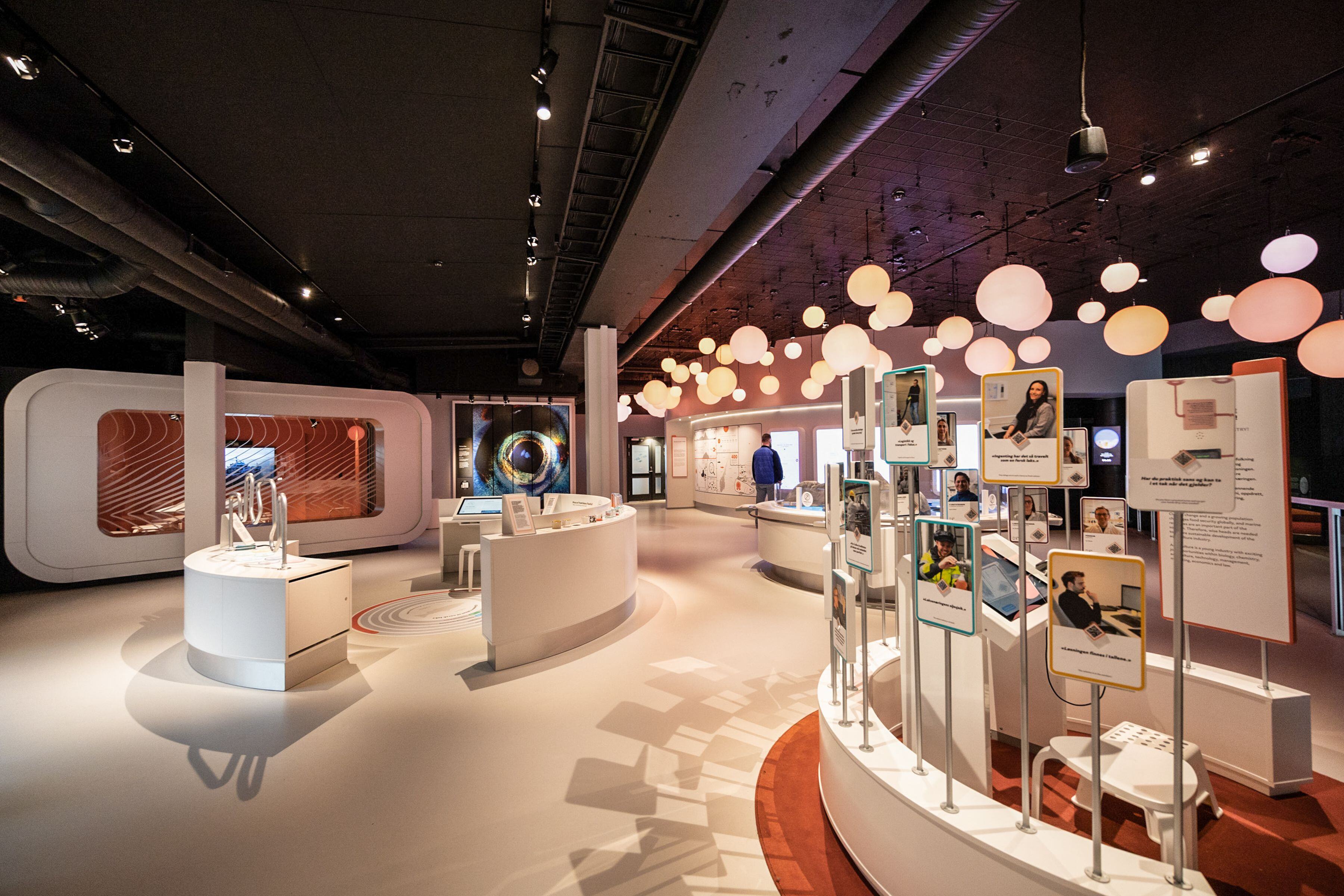
In the aquaculture Visitor Center, you'll gain insight into Norwegian salmon and rainbow trout farming, as well as some of the products they provide. You'll also learn about the challenges faced by the industry.

